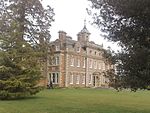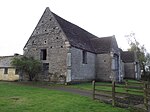Sandhurst, Gloucestershire
Borough of TewkesburyUse British English from March 2015Villages in Gloucestershire

Sandhurst is a village just outside Gloucester, England. The parish church and Wallsworth Hall are Grade II* listed buildings. The River Severn is the border between Sandhurst and the neighbouring parish of Maisemore. The Severn Way long distance footpath follows the river on the eastern (Sandhurst) bank. There are only two roads out of Sandhurst, one towards Gloucester, and another towards Tewkesbury. As a result, the village is regularly used as a bypass by drivers hoping to avoid traffic along the A38.
Excerpt from the Wikipedia article Sandhurst, Gloucestershire (License: CC BY-SA 3.0, Authors, Images).Sandhurst, Gloucestershire
Sandhurst Lane,
Geographical coordinates (GPS) Address Nearby Places Show on map
Geographical coordinates (GPS)
| Latitude | Longitude |
|---|---|
| N 51.90528 ° | E -2.24851 ° |
Address
Sandhurst Lane
GL2 9PD , Sandhurst
England, United Kingdom
Open on Google Maps










